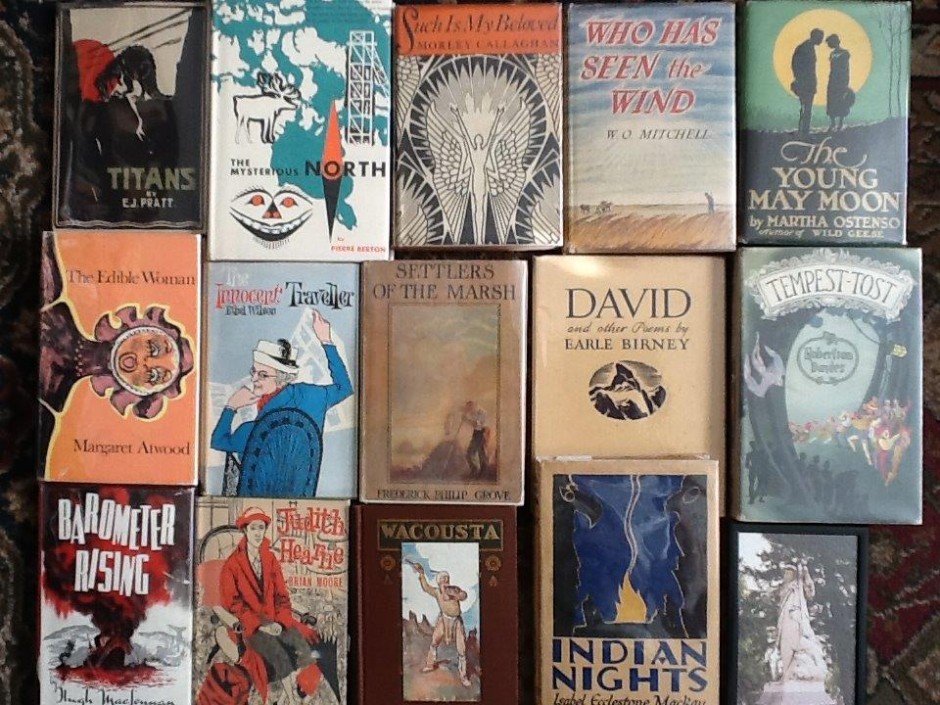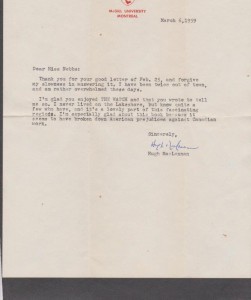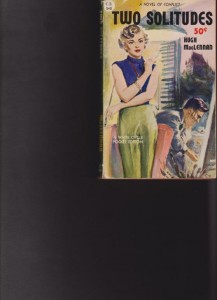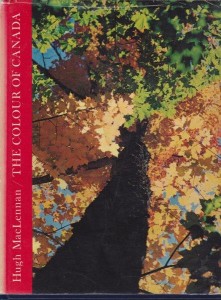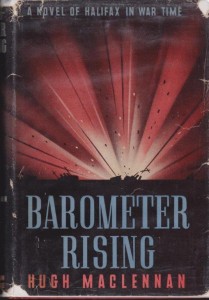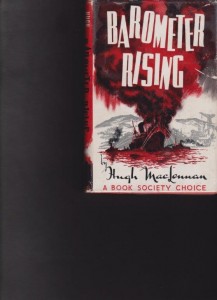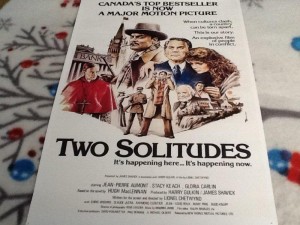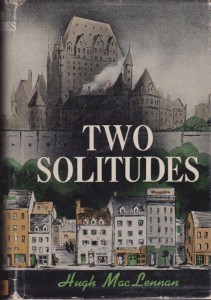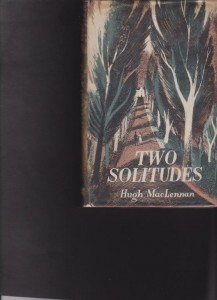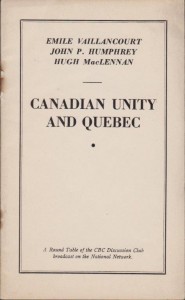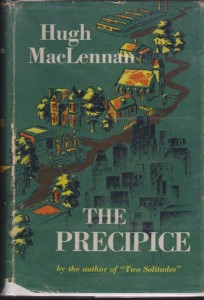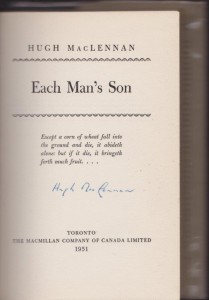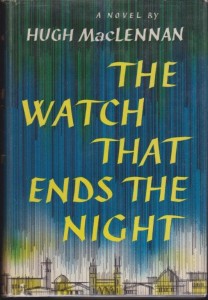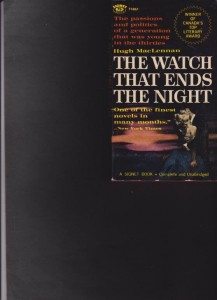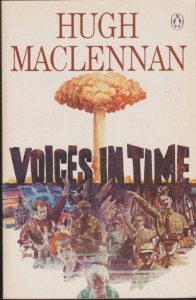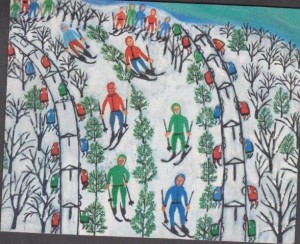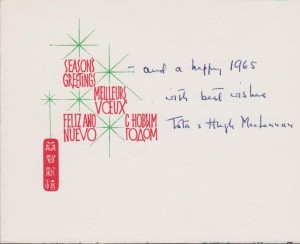(MacLennan signed letter on McGill stationery in response to comments on The Watch That Ends the Night; *all ephemera on this site are from my personal collection)
(rare 1945 signed Collins White Circle Pocket ed.)
(In the sixties, MacLennan turned to doing some visual books, this one–McClelland & Stewart, 1967– and The Rivers of Canada)
(starting out, 1928 Dalhousie yearbook–left: MacLennan, third down; right: MacLennan as tennis success; he also won an Rhodes scholarship at Oxford)
(his first book, based on the 1917 Halifax Explosion which occurred in his hometown when he was a child; Duell, Sloan & Pearce, 1941; bio blurb on back of same book)
(two more editions: left–UK–George G. Harrap, 1942 1st ed.–cover by E. Jeffrey; right; William Collins, 1941 scarce pb cover–MacLennan was one of the first Canadian authors published in a White Circle Edition)
(left: movie poster for ill-fated ’70s film version of this book–it was never issued in VHS or DVD; right: his first G-G winner; Collins, 1945, jacket by Lisbeth Lofgren)
(left: the very rare U.K. dj, Cresset, 1946; rare CBC Montreal roundtable talk, Nov. 1942, published by Canadian Printing & Lithographing Co.)
(G-G winner; rare signed 1st ed. Collins, 1948)
(signed Macmillan, 1951, jacket by Salter)
(left: G-G winner, 1st ed. Scribners, 1959–jacket by Philip Grushkin; Signet/New American pb, 1960)
(1978 dj Macmillan, 1978–photo: Peter Paterson; jacket design–Richard Miller)
(left: his last novel which surprised the critics, signed with laid-ins 1980, Macmillan dj; illustration–Christine Bunn, jacket design: Vera Jacyk; right: Penguin pb, 1981; jacket–indecipherable signature)
(rare signed 1952 speech text, UNB)
(rare 1965 Christmas card; Tota was his second wife)
(John) Hugh MacLennan (1907-1990) was born in Glace Bay, N.S. and from 12 to 21 slept year-round outside in a backyard tent. He spent time studying in England and the U.S. before returning to Canada to begin a new life with Dorothy Duncan, an American painter and writer, who had a significant influence on his decisions and work.
Because the 1917 Halifax Explosion happened in his hometown, MacLennan had lots of experiences and memories to include in his first novel Barometer Rising, also published in England, which was the beginning of his writing about and defining the Canadian experience. His Two Solitudes, about the divisions between English and French Canada, won a Governor General’s Award; he won a total of 5 of these awards and, with Michael Ondaatje, remains the top G-G winner of all time. His essays received the award twice: Cross-Country and Thirty and Three. (He and Robertson Davies were the top Canadian essayists in the 20th century.)
MacLennan taught Leonard Cohen, himself a graduate of McGill. An excellent NFB documentary on MacLennan’s life is Hugh MacLennan: Portrait of a Writer. Highly recommended, too, is Elspeth Cameron’s strong book Hugh MacLennan: A Writer’s Life which reveals his personal trials writing The Watch That Ends the Night, as the geneses and receptions to other novels.
